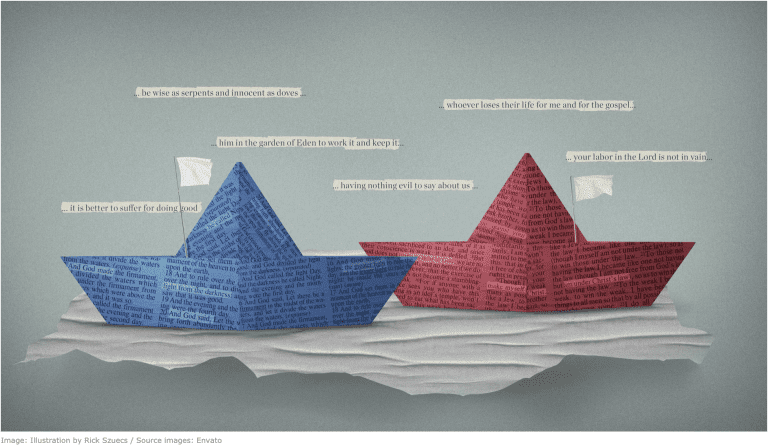What we don’t know about contextualization CAN hurt our gospel ministry. Typically, people regard contextualization as a form of communication or application. This is not mistaken; but it is critically incomplete.
Contextualization most basically is an act of interpretation. Only then can it be understood as communication or application. Contextualization is not primarily something we do to the gospel; rather, it is the mind’s perception of and/or response to the gospel. This is a broad description.
In actual fact, we can further subdivide contextualization into two kinds. The first is exegetical contextualization; the second is cultural contextualization.
Exegetical Contextualization
Exegetical contextualization refers to one’s interpreting Scripture from a cultural perspective.
It means locating the cultural context within the biblical text. Accordingly, someone with an East Asian worldview will more naturally see a number of concepts within the Bible that reflect the distinctives of his or her culture.
For example, one might more easily see themes like honor, shame, and collective identity. Exegetical contextualization means seeing what is true of our cultural context within the biblical text itself. I am not referring to eisegesis, whereby one forces foreign ideas into Scripture. Rather “exegetical contextualization” refers to a form of contextualization where one sees what actually is already in the text.
In short, we interpret Scripture through a cultural lens.
What might this look like in practice? In an East Asian context, an exegetically contextualized theology would take seriously language about God’s people not being “put to shame,” frequently used by biblical authors. Also, one could highlight instances of collectivism in both the Old and New Testament, such as when individuals are able to represent entire groups.
Cultural contextualization
Cultural contextualization refers to one’s interpreting culture from a biblical perspective.
 Hence, one looks at a culture and identifies various concepts that can already found in the Bible. It situates the biblical text within the cultural context.
Hence, one looks at a culture and identifies various concepts that can already found in the Bible. It situates the biblical text within the cultural context.
When examining a culture like China, the contextualizer might notice that God is called Father and the church is a family. Likewise, one might observe common features within the histories of Israel and China. These may include each people’s suffering from imperialism and demonstrating strong degrees of ethnocentric/nationalistic prejudice against outsiders.
Cultural contextualization means seeing what is true about a culture as a result of one’s having a biblical lens. In this way, the Bible provides new and true ways of assessing a cultural context.
What might this look like in a particular social setting? One could think of rampant consumerism and the fear people have of losing face. In light of Romans 6, we might say that people have become slaves to their homes, cars, or even to their own families. They need God to free them.
Why does this matter?
1. Protecting Theology
First, recognizing these two forms of contextualization can protect us from other mistaken or distorted views. For example, when interpreting Scripture, one should never use contemporary culture as a function replacement of the biblical context. In effect, this is the problem with the work of K. K. Yeo, who seems consistently to collapse Chinese culture into Paul’s letters, as if Paul were actually writing to modern Chinese people.[1]
Contextualization that is faithful to Scripture will clearly differentiate two locations––that of the reader and that which is being studied. That is, we must distinguish between the things we are interpreting and the perspective we use.
Breakthroughs in contextualization happen where there is overlap between these two locations. Overlap of course does not mean equivalence. No ancient biblical culture can be equated with any modern culture. In addition, one should not deny the importance of biblical ideas that are not inherent to a particular culture. In time, contrasting ideas can complement areas of overlap. After all, no culture is complete in itself.
Two Types of Syncretism
People use the term “syncretism” to refer to one’s confusing culture and Scripture. Most often, people think of “cultural syncretism,” wherein one reads his or her own contemporary culture into the ancient world.
 However, there is a subtler example of syncretism called “theological syncretism.” In this this kind of syncretism, people restrict Scriptural truth to their own theological traditions dressed in various cultural expressions.
However, there is a subtler example of syncretism called “theological syncretism.” In this this kind of syncretism, people restrict Scriptural truth to their own theological traditions dressed in various cultural expressions.
Accordingly, the metaphors and explanations that make the most sense to one group of people becomes the standard to which people from other cultures are supposed to conform. Western theologians and missionaries, for example, run the risk of “theological contextualization” when law-guilt metaphors are so emphasized that they functionally exclude other images and themes, like honor and shame.
2. Contextualizing Assumptions
If we assume that contextualization is mainly about communication or application, then we inevitably assume the thing (e.g. the gospel) that we want to contextualize. However, any theological truth we claim to know is an interpreted truth.
To put it another way, our conceptions of the gospel are always contextualized. Bevins rightly says, “There is no such thing as ‘theology’; there is only contextualized theology.”[2] Consequently, we at best end up contextualizing a contextualization. We simply provide wording or illustrations as a bridge by which the listener can understand the cultural perspective from which we are communicating the gospel. Our presentations are always culture laden.
3. Developing Contextualizations
The distinction between exegetical and cultural contextualization can help people actually develop biblical faithful and culturally understandable contextualizations. The difficulty of relating text and context can result in paralysis.
Not knowing how to “balance” the two, people fear compromising Scripture and thus do little to nothing by way of contextualization. By recognizing these two orientations, one then must consider how they relate to one another.
Interpretation precedes application. In the same way, exegetical contextualization is the foundation for cultural contextualization. Order matters. If the order gets reversed, unclear or problematic notions from a culture could be forced into one’s exegesis of the biblical text.
Naturally, hermeneutics (i.e. interpretation method) is a central component to any contextualization.[3] This single observation has great significance for missionary training and strategy. Missionaries should be sound exegetes, proficient in their ability to interpret the Bible.
This kind of skill is something quite distinct from simply being well versed in systematic theology and various biblical doctrines. When a missionary teaches the Bible to locals, he aims to demonstrate how his conclusions are reached.
Otherwise, what are the consequences? First of all, local Christians cannot reproduce the given interpretation. Second and more serious, they essentially grant greater authority to the foreign teacher above the Bible itself.
For a more extensive discussion on contextualization, see One Gospel for All Nations: A Practical Approach to Biblical Contextualization.
For a more rigorous demonstration of this approach, see Saving God’s Face: A Chinese Contextualization of Salvation through Honor and Shame.
_________________________
[1] For examples of his work, see K. K. Yeo, Musing with Confucius and Paul: Toward a Chinese Christian Theology (Eugene, Ore.: Cascade, 2008); K. K. Yeo, What Has Jerusalem to do with Beijing: Biblical Interpretation from a Chinese Perspective (Harrisburg, Pa.: Trinity Press, 1998).
[2] Bevans, Models of Contextual Theology, 3. Emphasis in original.
[3] David Clark, To Know and Love God, 104–10.
Photo Credit: Plexels













